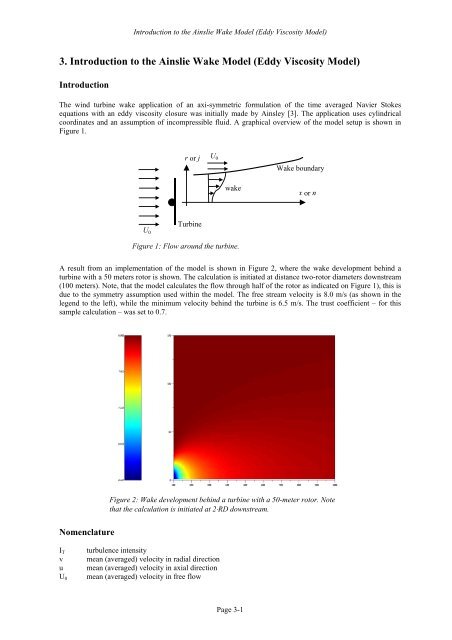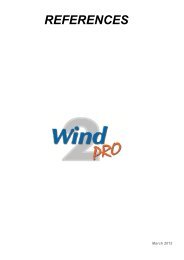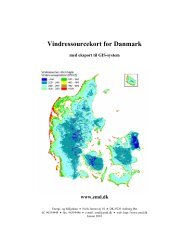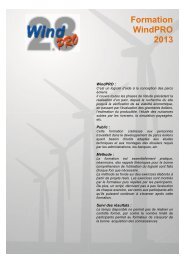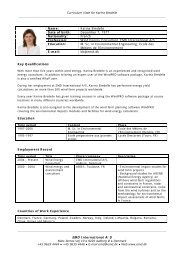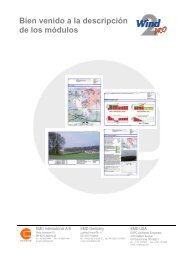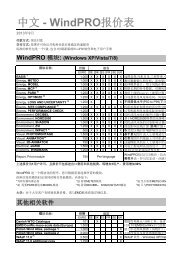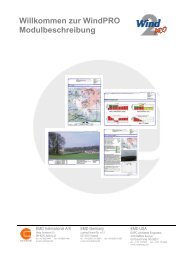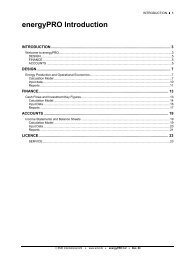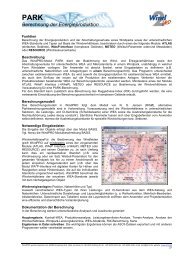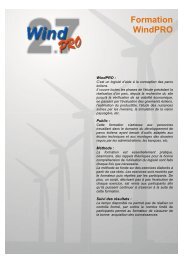WindPRO / PARK - EMD International AS.
WindPRO / PARK - EMD International AS.
WindPRO / PARK - EMD International AS.
You also want an ePaper? Increase the reach of your titles
YUMPU automatically turns print PDFs into web optimized ePapers that Google loves.
Introduction to the Ainslie Wake Model (Eddy Viscosity Model)<br />
3. Introduction to the Ainslie Wake Model (Eddy Viscosity Model)<br />
Introduction<br />
The wind turbine wake application of an axi-symmetric formulation of the time averaged Navier Stokes<br />
equations with an eddy viscosity closure was initially made by Ainsley [3]. The application uses cylindrical<br />
coordinates and an assumption of incompressible fluid. A graphical overview of the model setup is shown in<br />
Figure 1.<br />
r or j<br />
U 0<br />
Wake boundary<br />
wake<br />
x or n<br />
U 0<br />
Turbine<br />
Figure 1: Flow around the turbine.<br />
A result from an implementation of the model is shown in Figure 2, where the wake development behind a<br />
turbine with a 50 meters rotor is shown. The calculation is initiated at distance two-rotor diameters downstream<br />
(100 meters). Note, that the model calculates the flow through half of the rotor as indicated on Figure 1), this is<br />
due to the symmetry assumption used within the model. The free stream velocity is 8.0 m/s (as shown in the<br />
legend to the left), while the minimum velocity behind the turbine is 6.5 m/s. The trust coefficient – for this<br />
sample calculation – was set to 0.7.<br />
Figure 2: Wake development behind a turbine with a 50-meter rotor. Note<br />
that the calculation is initiated at 2⋅RD downstream.<br />
Nomenclature<br />
I T<br />
v<br />
u<br />
U 0<br />
turbulence intensity<br />
mean (averaged) velocity in radial direction<br />
mean (averaged) velocity in axial direction<br />
mean (averaged) velocity in free flow<br />
Page 3-1


